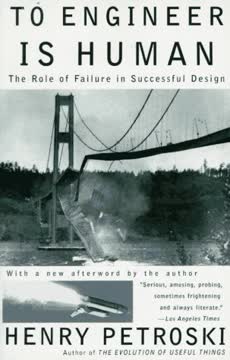Key Takeaways
1. Infrastructure: A Foundation Long Overlooked
Today there is a heightened awareness of the importance of our physical infrastructure to the economic health of the nation and the well-being of its citizens, not to mention to our national pride.
Defining Infrastructure. Infrastructure, encompassing both public and private works, forms the backbone of a civilized society, enabling economic activity and ensuring the well-being of its citizens. While the concept is ancient, the explicit term "infrastructure" is relatively new, gaining prominence only in the mid-20th century. This includes roads, bridges, water supplies, and communication networks.
The Cost of Neglect. Neglecting infrastructure leads to a cascade of negative consequences, including economic losses due to congestion, increased vehicle maintenance costs, and compromised public safety. Traffic congestion alone costs the U.S. over $121 billion annually in lost time and wasted fuel. Deteriorating infrastructure undermines the nation's economic competitiveness and quality of life.
A Call to Action. The nation's attitude toward infrastructure must change to address the growing problem of aging and inadequate systems. This requires a renewed commitment to investment, honest and proper construction practices, and a long-term vision for sustainable infrastructure development. The challenge is to move beyond short-term fixes and prioritize the long-term health of our nation's physical foundation.
2. Roads: From Ancient Paths to Modern Asphalt
The construction of stone-paved roads was obviously very labor and materials intensive, and the Romans and less expansive civilizations looked for simpler and cheaper ways to put a dry face on dirt and mud paths.
Evolution of Road Construction. From rudimentary dirt paths to sophisticated asphalt pavements, road construction has evolved over millennia, driven by the need for efficient transportation and economic development. Early innovations included corduroy roads, plank roads, and the use of gravel and broken stone. The Romans were masters of road construction, building durable stone-paved routes like the Appian Way.
Key Innovations. The modern era of road design began with the work of engineers like Trésaguet, Telford, and McAdam, who developed techniques for building durable and well-drained road surfaces. McAdam's macadamisation, using crushed stone and tar, revolutionized road construction in the 19th century. The introduction of concrete and asphalt in the late 19th and early 20th centuries further transformed road building.
The Concrete vs. Asphalt Debate. The choice between concrete and asphalt has been a long-standing debate in road construction. While concrete offers durability, asphalt provides a smoother ride and is often more cost-effective. Today, asphalt dominates paved roads in the U.S., but concrete remains a viable option for high-traffic areas and specialized applications.
3. Highways: Connecting Dreams, Facing Dilemmas
It did not take a great leap of the imagination for Lieutenant Colonel Eisenhower to conclude that the United States would benefit greatly from an improved system of highways and bridges.
The Transcontinental Vision. The early 20th century saw the rise of the automobile and the dream of transcontinental highways connecting the nation. Figures like Carl Graham Fisher and organizations like the Lincoln Highway Association championed the cause of better roads. The U.S. Army's 1919 transcontinental convoy, led by Dwight D. Eisenhower, highlighted the need for improved infrastructure.
The Interstate Era. The Federal-Aid Highway Act of 1956, championed by President Eisenhower, authorized the construction of the Interstate Highway System, a network of high-speed, limited-access highways that transformed American transportation. The system was funded by a dedicated Highway Trust Fund, supported by federal gas taxes.
Contemporary Challenges. Today, the Interstate Highway System faces challenges of aging infrastructure, increasing congestion, and funding shortfalls. Dilemmas include balancing maintenance and expansion, addressing environmental concerns, and finding sustainable funding mechanisms. The future of American highways depends on addressing these challenges effectively.
4. Traffic Control: Balancing Safety and Efficiency
Signs are the voices of the highway. They tell the traveler where he should go; how fast he may travel, and when he must beware of danger. Without signs the road is silent, unknown and menacing.
The Evolution of Traffic Control. From early "horror signs" to modern traffic signals and pavement markings, traffic control devices have evolved to improve safety and efficiency on roads. The development of standardized road signs and markings was crucial for creating a cohesive national highway system.
Key Innovations. Key innovations in traffic control include the highway centerline, the stop sign, and the traffic light. The standardization of these devices, along with the development of uniform traffic laws, has made driving safer and more predictable.
Contemporary Issues. Contemporary issues in traffic control include improving the visibility of pavement markings, adapting signs and signals to the needs of aging drivers, and integrating new technologies like connected vehicles and autonomous driving. The goal is to create a traffic control system that is both safe and efficient for all users.
5. Infrastructure's Dark Side: Failures and Corruption
That which just sits in place and functions without incident calls no attention to itself; that which has unintended movement, malfunctions, collapses, or explodes catches the eye of everyone.
The Inevitability of Failure. Infrastructure, like all designed systems, is subject to failure due to factors such as design flaws, material defects, environmental stresses, and inadequate maintenance. High-profile failures, such as bridge collapses and pipeline explosions, highlight the importance of vigilance and quality control.
The Cost of Corruption. Corruption, graft, waste, fraud, and abuse can undermine infrastructure projects, leading to shoddy construction, cost overruns, and compromised safety. Examples from history, such as Boss Tweed's New York and the Merritt Parkway scandal, illustrate the pervasive nature of corruption in public works.
Maintaining Integrity. Combating corruption requires transparency, accountability, and ethical leadership at all levels of government and industry. Robust oversight mechanisms, independent audits, and whistleblower protections are essential for ensuring that infrastructure projects are built honestly and properly.
6. Funding the Future: Taxes, Trusts, and Tough Choices
We vote for roads and against potholes; for fixing our bridges and against the taxes to do so; for pork and earmarks but not necessarily for the common good.
The Highway Trust Fund. The Highway Trust Fund, established in 1956, has been the primary source of federal funding for highways and mass transit. However, declining gas tax revenues, due to increased fuel efficiency and alternative fuel vehicles, have created a long-term funding shortfall.
Funding Dilemmas. Contemporary dilemmas include whether to continue the Highway Trust Fund, how to replenish it, or to turn responsibility for paying for roads and bridges over to the individual states. Alternative funding mechanisms, such as mileage-based taxes and public-private partnerships, are being explored.
Political Realities. Infrastructure funding is inherently political, with competing interests and priorities influencing decision-making. Balancing the needs of different regions, modes of transportation, and stakeholders requires compromise and leadership. The future of infrastructure funding depends on finding sustainable and equitable solutions that address the nation's long-term needs.
7. Beyond Function: Aesthetics, Legacy, and Quality of Life
The quality of a nation’s infrastructure is a critical index of its economic vitality. Reliable transportation, clean water, and safe disposal of wastes are basic elements of civilized society and a productive economy.
Infrastructure as Art. Infrastructure can be more than just functional; it can also be aesthetically pleasing and contribute to the quality of life. Examples like the Pont du Gard, the Brooklyn Bridge, and the Dames Point Bridge demonstrate how engineering can rise to the level of art.
The Importance of Design. Thoughtful design considerations, such as landscaping, lighting, and materials, can enhance the visual appeal of infrastructure and create a more positive experience for users. Iconic structures can become landmarks that define a city or region.
Balancing Function and Form. Balancing function and form in infrastructure design requires careful consideration of cost, environmental impact, and community needs. The goal is to create infrastructure that is both efficient and beautiful, serving the needs of present and future generations.
8. The Promise of Tomorrow: Smart Technology and Sustainable Solutions
By presenting historical background on how our roads, bridges, and traffic habits have come to be as they are, this book describes how past choices—both good and bad—have put us in the position we now are with infrastructure, and also presents the background to and current status of fundamental issues involved in contemporary legislation and practice related to infrastructure.
Smart Infrastructure. The future of infrastructure lies in the integration of smart technologies, such as sensors, wireless communication, and data analytics. Smart roads and bridges can monitor their own condition, optimize traffic flow, and improve safety.
Sustainable Solutions. Sustainable infrastructure solutions are needed to address environmental concerns and ensure long-term viability. This includes using recycled materials, reducing energy consumption, and minimizing the impact on ecosystems.
The Road Ahead. The choices we make today regarding infrastructure will shape the quality of life for future generations. By embracing innovation, prioritizing sustainability, and fostering collaboration, we can create a future where infrastructure is a source of pride and a foundation for prosperity.
Last updated:
Review Summary
The Road Taken receives mixed reviews, with an average rating of 3.45/5. Readers appreciate the historical insights into American infrastructure, particularly roads and bridges. However, many find the writing disorganized, overly detailed, and lacking a cohesive narrative. Some praise Petroski's expertise and interesting anecdotes, while others criticize the book's focus on New York and personal opinions. The book is noted for its in-depth look at infrastructure history but falls short in discussing future developments. Overall, it's considered informative but sometimes dry and meandering.
Similar Books
Download PDF
Download EPUB
.epub digital book format is ideal for reading ebooks on phones, tablets, and e-readers.



















